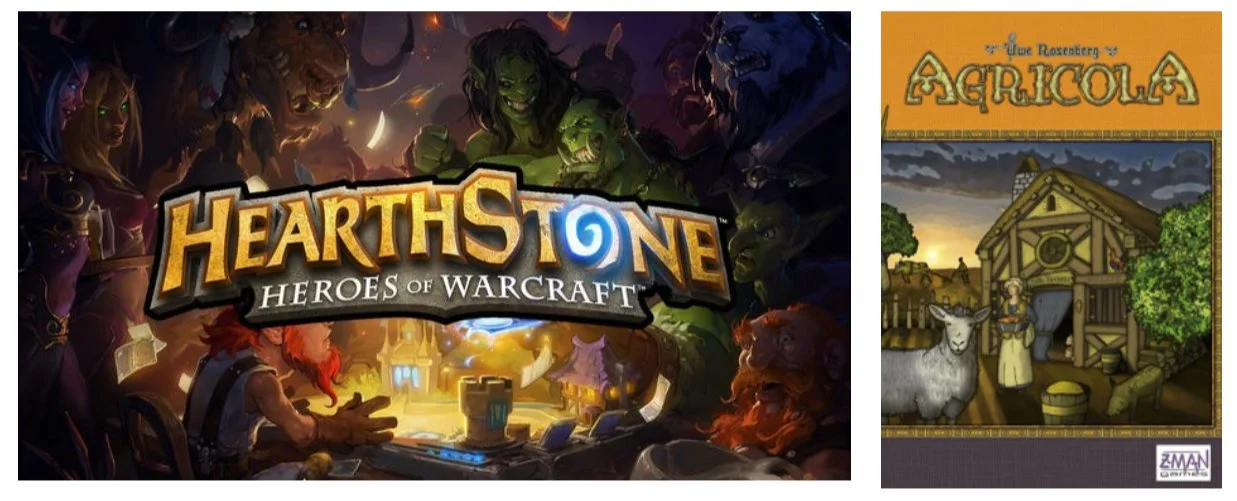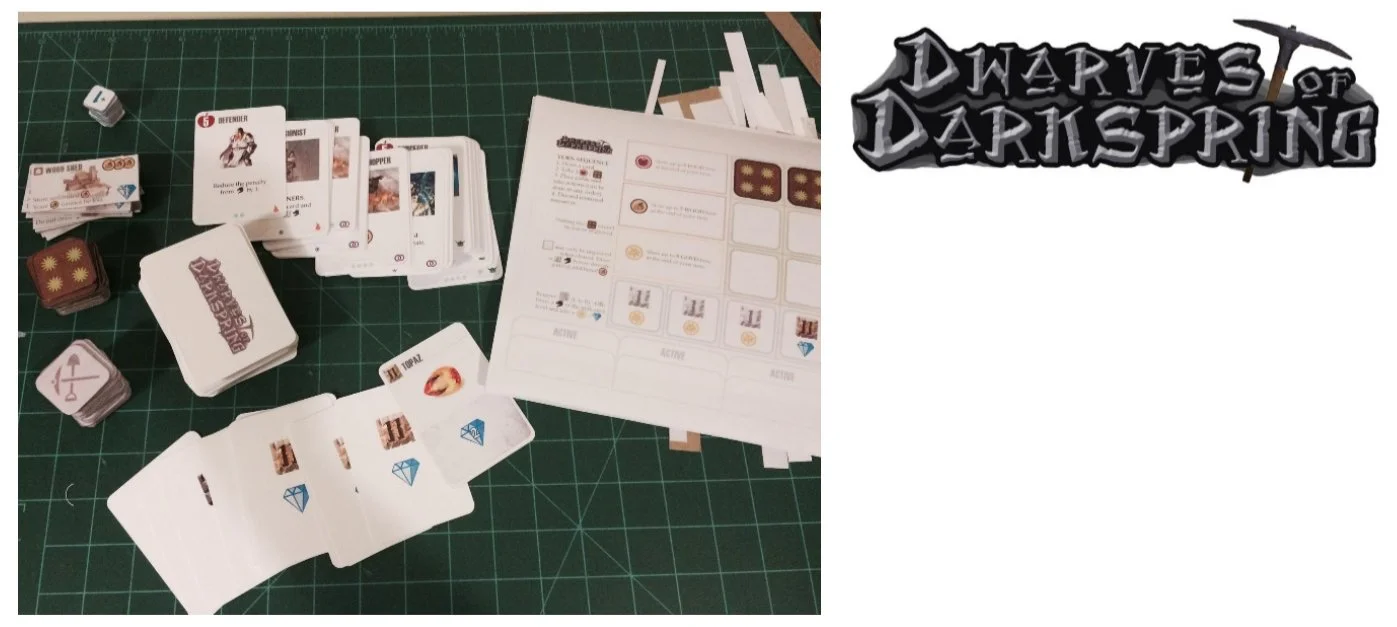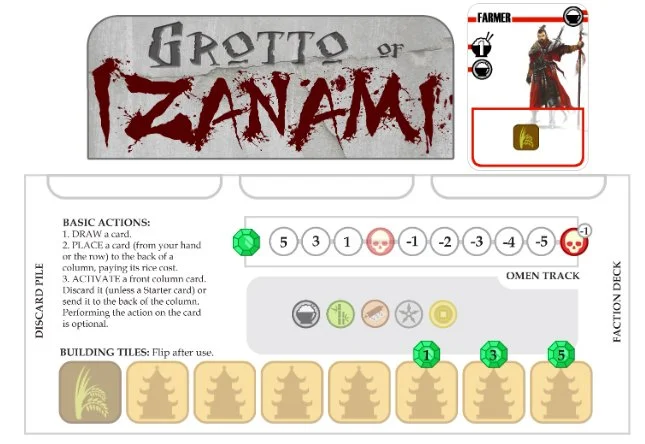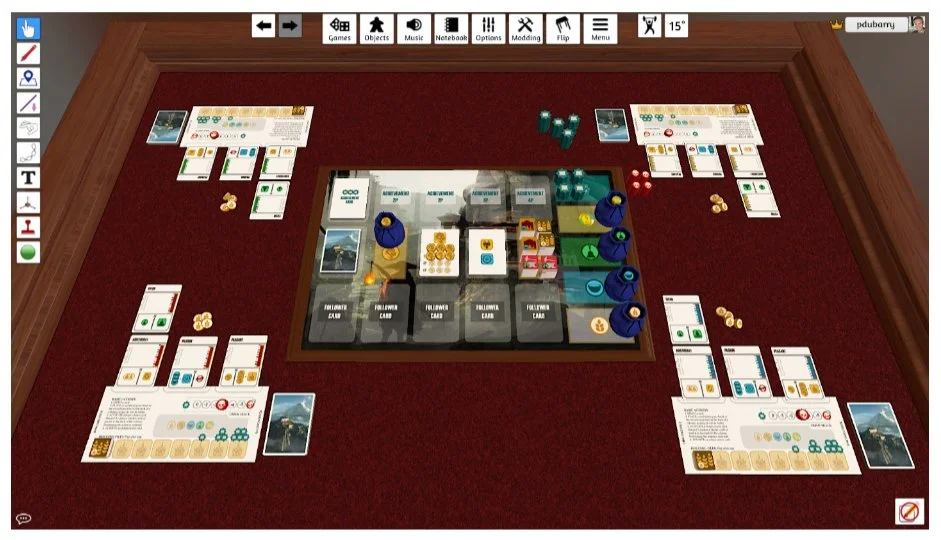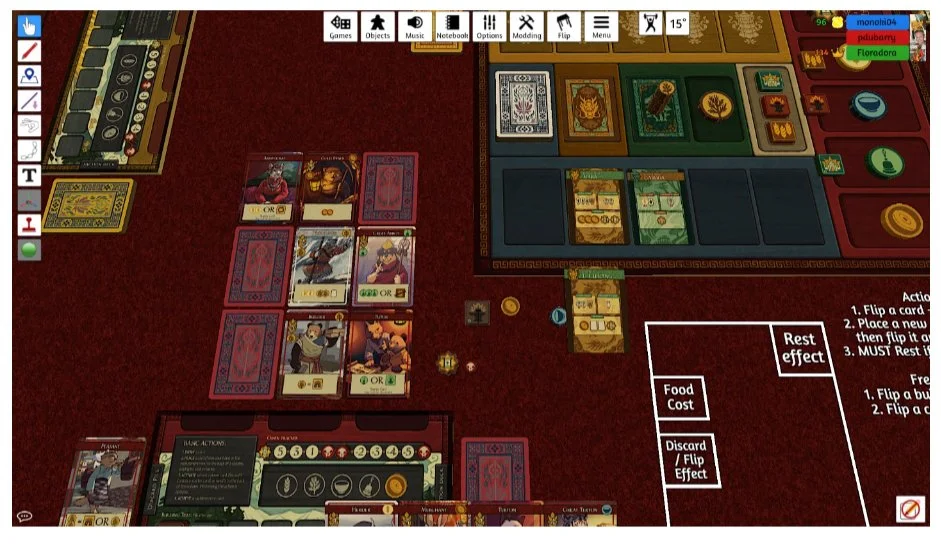Snowcrest Designer Diary
Hello again!
Snowcrest’s Gamefound campaign is just under a week away! You can check it out here: https://gamefound.com/en/projects/grail-games/snowcrest We hope you will consider backing us upon launch. We can't wait for Snowcrest to be on your gaming shelf :)
Today, as a lead up to the campaign's launch, we will hand over this blog to the game's designer: Philip duBarry. Philip has designed many great games over the last decade or more, and here he shares his insights into what it took to make Snowcrest happen - a game years in the making!
Snowcrest Designer Diary
Hi! My name is Philip duBarry, thanks so much for checking out Snowcrest!
By the end of 2014, I had become hooked on a new online card game called Hearthstone. Of course, it wasn’t just a way to pass the time—it was “research”. At least that’s what I told myself. My favorite part about the design was the mana progression. Each turn, you would get one more point of mana to spend, one on turn one, two on turn two, and so on. By the end, you were getting masses of mana to spend, allowing you to play truly epic cards. Often the game ended at this point (or before). I felt this aspect of the game could be applied to a board game. What if I combined this resource progression and personal decks with something like the resource management and building themes found in euro games like Agricola?
By February of 2015, I had my first prototype. In this first version, players would begin by drafting the cards they would add to their decks. Farms on player boards yielded a constant, yet increasing, amount of food each turn, which players could use to deploy more cards into their tableaus. As the game continued, more and better actions became available until the victory point threshold was reached. I soon settled on a fantasy theme featuring a village of dwarves whose goal was to dig into their nearby mines to discover gold and jewels. As Tolkien taught us, digging too deeply can lead to all sorts of unpleasant consequences. Eventually, I incorporated the idea that mining would release random monsters to terrorize the miner as well as all the other players who all happened to be in the neighborhood. With this final piece in place, I had a title: Dwarves of Darkspring.
Over the next several months, I playtested and revised this version of the game. I assigned all the cards to pre-assembled decks so players could begin immediately without having to draft cards for a game they didn’t know how to play yet. I moved all the mining to a central, shared board to increase the interaction in the game. The mining spaces became tiles with nasty creatures to uncover. All players would lose the indicated resources when a creature was revealed. If you didn’t have those resources, or chose not to lose them, you would increase your fear track. Wood came only from a common forest, which also contained random beasts. The story and mechanics were coming together nicely.
By the summer of 2016, my game was ready to be pitched at Origins and GenCon. By this time, I had already designed several games, and I had a long list of publishers willing to meet with me. Surely one of them (many of them!) would be itching to acquire such an amazing game. The meetings took place. Publishers had plenty of positive comments, but no one bit. One publisher told me it was cool, but dwarves were now out of style—too overdone. Other companies simply had different kinds of games in their sights. My timing was just off. Perhaps the game was off, too. It’s quite hard to accurately judgment the awesomeness of your own game. I went back home to do some soul-searching.
The game sat in a drawer for several months. Then I got a flash of insight: Why not make the game into a 4X game? Those seem popular with the kids these days…it just might work! I spent several months in 2017 crafting this new version. I dropped the dwarf theme and went for some kind of generic “civilization” feel. The story? People all discovered a mountainous island at the same time and were vying to claim its riches. But there are monsters. Sounds electric, right? By the end of the year, I knew I was grasping at straws. Whatever needed to happen to the game, this was not it.
This was all so discouraging. People kept asking me when the “dwarf game” was coming out, but I had nothing but disappointment to share. I just couldn’t figure it out—I knew in my bones that I had a fun game here. My playtesters liked it. too. How could I present it in the best light? How could I convince publishers of what I knew to be true? I focused on other projects, but I just couldn’t seem to let it go.
I spent some time in 2018 rebuilding the game from the ground up. I had a new idea for a better theme: Feudal Japan. I read stories of Japanese mythology and discovered a story about a deity traveling to the underworld to rescue his dead wife. I learned about various spirits called Yokai and all sorts of fascinating people, both real and mythical. I thought all of this could be put together to showcase my original concept in a more engaging way. And so, I made Grotto of Izanami.
I took the best of the old systems and mercilessly streamlined everything I could. Instead of mining, players were searching for lost treasure in a secret cave connected to the underworld. I also added a new raid mechanism whereby players could “attack” the others, but in a very Eurogame way. The raiding player would reveal a number of shuriken tokens. Each other player either revealed more (taking a victory point jewel) or passed, allowing the raiding player to collect a jewel. Buildings would also work differently. They would be tiles that could be flipped for a free resource and then refreshed using certain actions on cards. By 2019, the game was humming again.
I pitched the game to lots more publishers at GenCon that year. The board game industry landscape had changed significantly over the last few years, and I met many new faces. One of those was David Harding of Grail Games. We connected immediately, and he intuitively grasped how fun the game could be. Other publishers showed interest as well, but David’s enthusiasm really got my attention.
David spent some time evaluating the game over the following months, and we played a few more times over Tabletop Simulator. He loved the game, but had one pretty big suggestion. Another game he worked on in the past, Kashgar, featured cards put in columns where the player only had access to the top card. They could use that action and place it at the back of the column or discard it. This would replace the tableau part of my game. Though a radical suggestion, I really liked the sound of it. I made a new prototype, and we began testing it. For the most part, it worked brilliantly.
The game was finally progressing again! Then March 2020 saw Covid lockdowns and shipping chaos. Despite his excitement about the game, David and Grail Games were not quite in a position to sign a contract. There was also significant ambivalence toward the theme. The game languished for several more months as the industry struggled to regain a sense of normalcy and as we worked to re-imagine the setting.
If feudal Japan was not quite right, what else would fit? After talking over many other ideas (Steampunk, the Australian Outback, Victorian London, and alien archeology, to name just a few), we settled on something loosely-based on the snowy mountains of Tibet. We ended up shifting the theme into a more fantasy, anthropomorphic animal space to widen the appeal of the game and convey its lighter nature. We picked the name Snowcrest. We finally signed the contract in April of 2021. The plan was to aim for a Kickstarter in Q1 of 2023.
I heard very little news until May of 2022. I was informed that David was no longer able to work on the game. He had taken a break from the industry to focus on his education career. I was disappointed, but bolstered by the company's promise to carry on with the project. I was pleased to reconnect with AJ, whom I had met back in 2017 when he worked for Kolossal Games. I also met Chris and Matthew, who would all be working to bring Snowcrest to the finish line.
Progress was slow, but steady. Unfortunately, a Q1 2023 Kickstarter was not to be. More development ensued. Then in August of 2023, I got some great news: David had returned to head Grail Games! Soon after, David had another flash of genius. Instead of having the cards in columns, David arranged them into a 3x3 grid. Now there was a bit of a tic-tac-toe element. This did wonders for the game’s tension and pacing. Every time you used a card’s action, you flipped it over. Once three cards in a row were flipped you had to spend a turn “resting”. However, this was not a wasted turn, as you would be collecting bonus resources from all the cards still up. I got to try it out in September and was amazed at how well it played.
After a bit more fine-tuning, the game was announced in February 2024, complete with a gorgeous cover and beautiful artwork by Kerri Aitken. It has been nearly a decade in the making, but I am so pleased with the final result. It’s been like climbing a cold, snowy mountain. But now I am standing at the top looking out over a glorious view. I hope you enjoy the game!
- Philip

